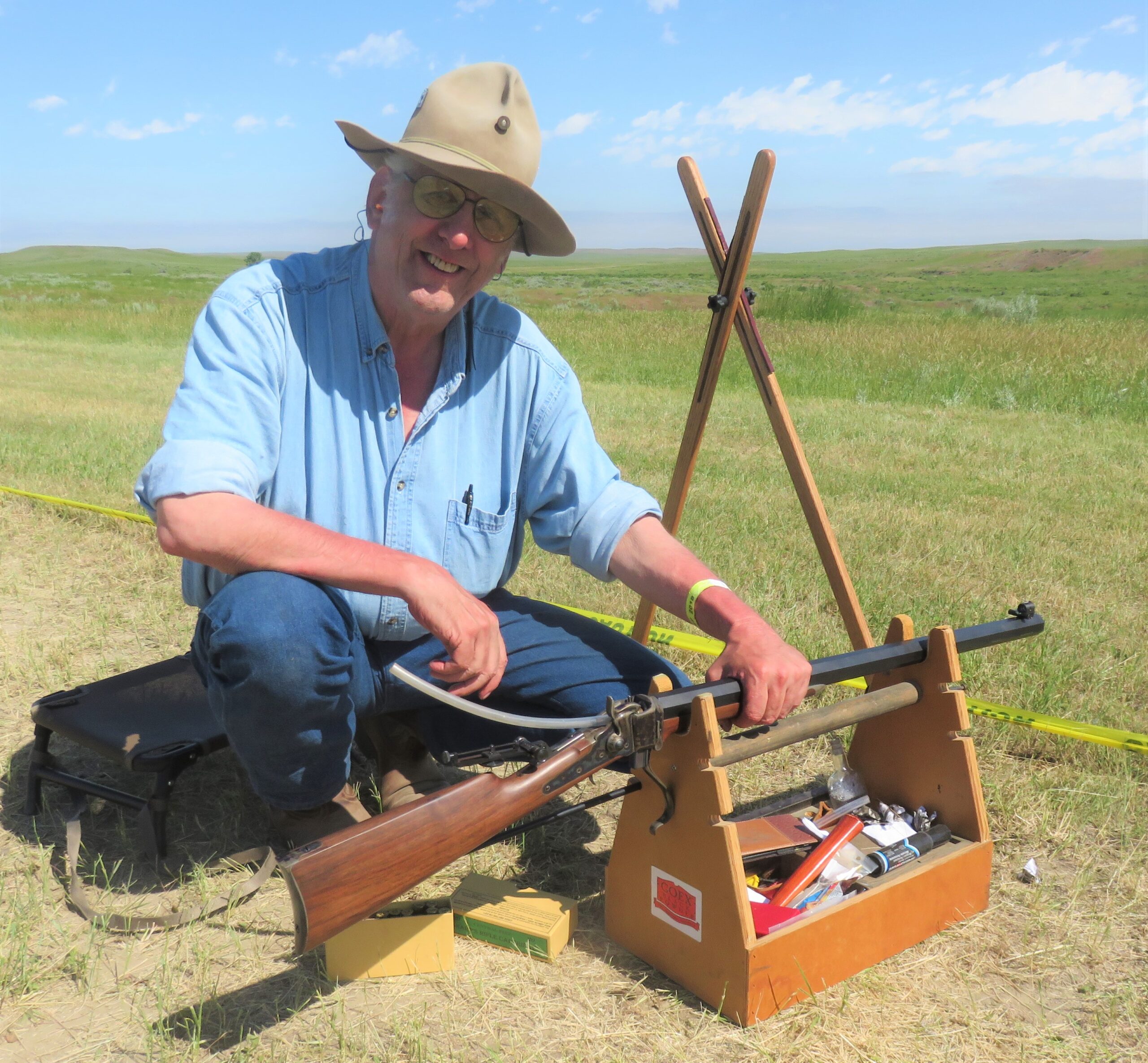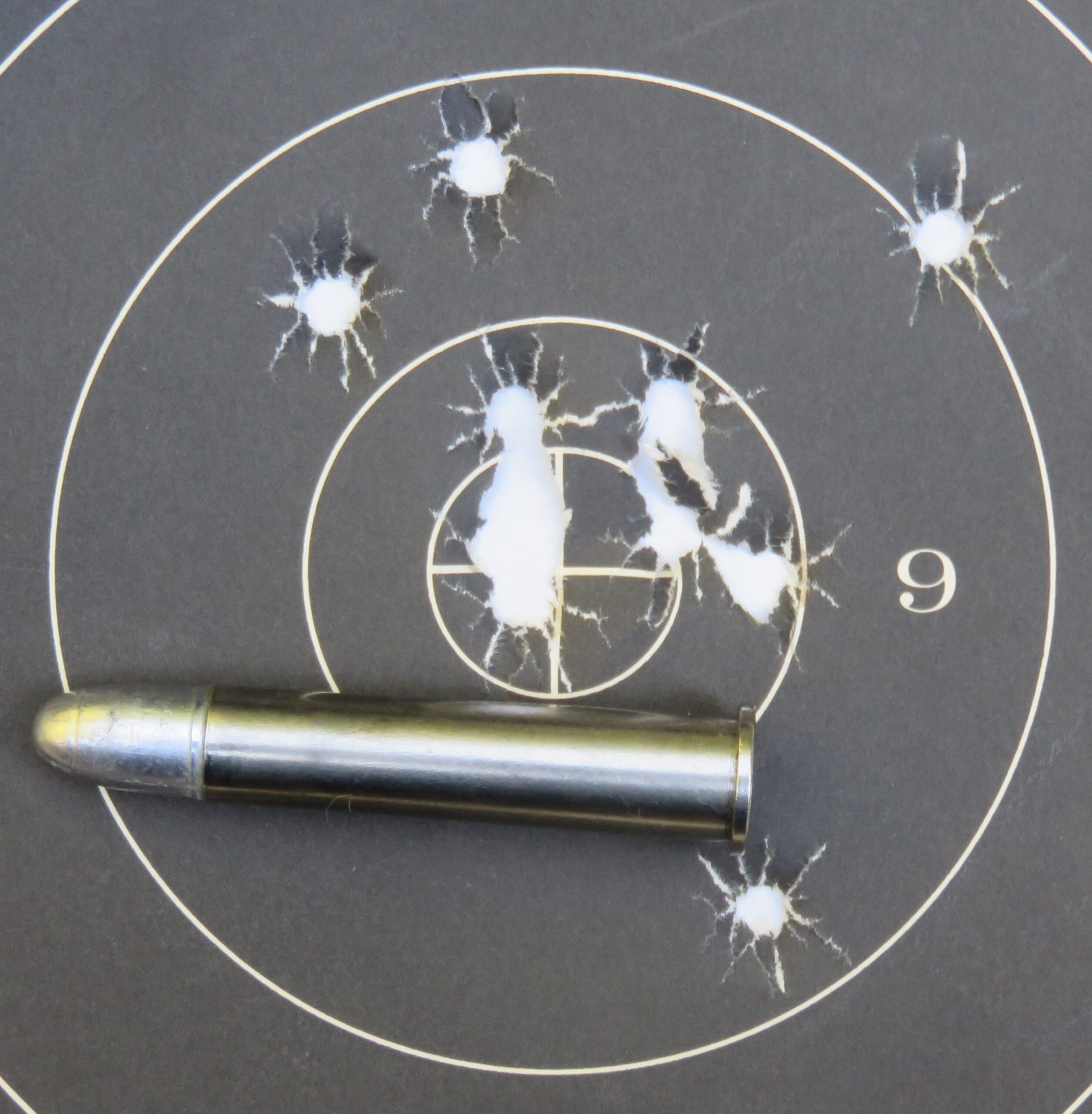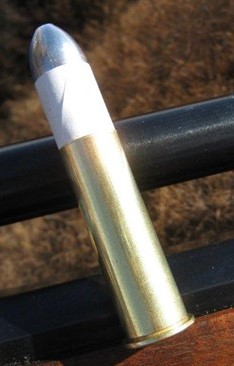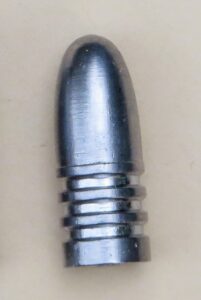
By Mike Nesbitt | Contributing Editor
There is a term often used by black powder cartridge reloaders for adjusting the load for any particular cartridge or gun and that’s called ‘tweaking.’
Tweaking the load simply means making small changes or adjustments while in search of the specific load that will give you the performance you want. Most generally the performance we’re looking for is a tighter group which can easily equate to more hits on long range targets.
Tweaking the load can be done in many ways and remember that with black powder cartridge shooting, any difference can make a difference. Those differences can be simply changing the powder from one lot to another even though the brand, granulation, and the powder charge might remain unchanged. Changing the primer from one brand to another, or using magnum primers rather than standard, or placing a thin or paper “wad” over the flash hole inside the case can make a difference. Another form of tweaking is trying bullets of different diameters, especially when using paper patched bullets. There are several steps and different directions in tweaking but one thing to remember is to make only one change at a time.
You should make only one change at a time because if you make two or three changes and then recorded a difference in performance, which change was it that made the difference?
First of all, let’s agree that all loading recommendations are simply generalities. Those are usually pretty good but with tweaking we can find a better load although that will only be for the rifle we’re using. The need for finding a specific load might be obvious or perhaps not even needed. Let me get into some specific examples because you might remember what Mark Twain said about generalities: “All generalities are false, including this one.”
A classic area to expose the need for tweaking is with today’s .50-caliber black powder cartridge rifles and we’re speaking mainly of the .50/70 and the .50/90. Those are mostly made with barrels that have a 1 in 24” (in Green Mountain barrels) or even a 1 in 22” (such as the Shiloh Sharps) rate of twist and a twist that fast in the .50 caliber guns is meant for rather heavy bullets.
My friend Dick Savage bought a .50/70, made by C. Sharps Arms, and tried several paper patched bullets for accuracy, beginning with slugs weighing 480 grains. He tried increasingly heavier bullets until reaching satisfaction with a 540-grain patched bullet, powered by 76 grains of KIK 2F powder. With that load he was able to achieve groups measuring 1½” across at 150 yards, when fired from the bench with his scope-sighted Sharps.
This was a load he used to harvest a buffalo, a two-year old bull. The shot was taken at 126 yards (measured before the shot with a range finder), a heart shot which resulted in a one-shot kill.
Dick’s tweaking for that load/rifle was done by using heavier and heavier bullets until he found what he wanted. Then, just a couple of years later, he had to do it all over again because the KIK powder became unavailable. He then switched to GOEX’s Olde Eynsford powder and he told me he bought enough to keep himself well stocked, all from the same lot. The reason was because when a new lot of the same powder type would be produced, something would be different. Dick had been through his load tweaking process enough times already. He probably wouldn’t need to change or modify his bullet but the powder charge would have to be changed or updated.
Powder charges are probably what receive the most attention while tweaking the black powder cartridge loads. One good way to do this is to load either five or ten rounds with a given loading, then increase the powder charge for another five or ten rounds, then increase it again, perhaps by just two grains at a time, to see which powder charge delivers the best group. This can be a very effective way of finding out what your rifle likes to devour but be sure to use some method of identifying which loads are which…

In my own experience, tweaking the powder charge worked very well with my Sharps in .44/70 caliber. (The .44/70 is a modern black powder ‘wildcat’ made by tapering down the .45/70 case to accept the .446” diameter .44 Sharps bullets. The dies for reloading these are marked “.44/70 CSS, for “C. Sharps Straight.”) I wanted my .44/70 to perform well with a 405-grain bullet, cast from a Steve Brooks “Tru-Bore” bullet mold, for short range shooting at 100 and 200 yards. My .44/70, by C. Sharps Arms with a heavy 32-inch barrel, is a delight to shoot with the light recoiling loads that were developed.
Those loads were started at just 60 grains of Olde Eynsford 1½ F powder. That load performed! After just one try, I took the rifle to a match but then received a score that was so low that it embarrassed me. So, always try your “good loads” more than once.
More tweaking was done by raising the powder charge one grain at a time. Things improved each time and I settled on a load using the Brooks 405-grain bullets, using 64 grains of the Olde Eynsford 1½ F powder. That one was tried more than once and it has become my “go to” load for the fine .44/70 rifle.
Similar tweaking was done very recently by Mike Moran, a fellow Sharps shooter. He was trying some .45/70 loads using a bullet from Accurate Molds’ #46-413N, a 413-grain projectile with two lube grooves which fairly well copy an original Sharps bullet. It was my suggestion that he try the bullet with 65 grains of Swiss 1 ½ Fg powder and with that his shooting wasn’t bad in the long-barreled Model 1874 Sharps Bridgeport. However, he then tried 70 grains of the Swiss 1 ½ Fg powder and the group shrank very nicely, so he now loads only 70 grains of the Swiss behind that bullet.
Tweaking with the .44/70 was also done with the bullets, trying that same powder charge but with bullets cast from differing alloys. My “standard” or most used lead alloy is a 25-1 lead and tin mixture, which I generally buy from Buffalo Arms Company. But while looking for improvements, I tried 20-1 and 16-1 alloys. Changing the alloy does a tiny bit more than simply change the hardness of the bullet, it will also change the diameter of the bullet as it drops from the mold. Tin has a different shrink rate than lead so those bullets cast with a higher content of tin also have slightly greater diameter. That was easily felt when the bullets were sized through a .446” sizing die and I feel that the 16-1 bullets were more uniform after being sized than the 25-1 bullets from the same mold. This, of course, could be done with other calibers, perhaps with the same outcome.
Sometimes tweaking with the bullets’ diameter will lead to positive results. This reminds me of a small test I made with my C. Sharps Highwall in .40/70 Sharps Straight, with a Green Mountain barrel. The bullet I liked using was cast from Accurate Molds’ #41-370D, weighing about 375 grains, and it was being shot with 60 grains of Olde Eynsford 1½ F powder. For a while I was sizing that bullet to .410” but then tried sizing to .408” and for me those smaller bullets seated easier in the cases and, in my opinion, they shot more consistently as well. So, I have used those bullets sized to .408” ever since. However, if another bullet is tried in that .40/70, the same test will likely need to be repeated.
Shooting with paper patched bullets is an area where tweaking will be needed, you can almost bet on it. That tweaking might be in bullet weight, and several of our molds for paper patched bullets are adjustable, or in diameter. The tweaking of bullet diameter might mean different molds or just patching with a different weight of paper. (Be sure to use only cotton paper, other ‘papers,’ or blends of papers, can erode the barrel.) Then there will be the question of how much lube to use under the bullets if lube is to be used at all. Add that to the questions of how much powder, and what kind of powder, to use in addition to how far into the barrel should the bullet extend when the cartridge is chambered. We might say that every good paper patch load is actually very good only in the rifle it was developed in. But don’t let that turn you away from shooting paper patched loads, shooting paper patched bullets has several rewards.

Back to powder charges, so far all of the tweaking with powder charges that I have mentioned have utilized increases of powder. We can tweak the load by reducing the powder charge just as easily and just as often. Currently I’m looking for a more consistent load for my .50/70 Sharps with the custom barrel from Oregon Barrel Company which has a 1 in 32” twist, using Accurate Molds’ #52-450L2 bullet, a 450-grain slug which looks like the old Government loading but it has larger grease grooves. The load I had been using burned 65 grains of Olde Eynsford 1 ½ F powder but lately that hasn’t been performing, at least not well enough to use in a short-range match. So, I dropped the powder charge to just 60 grains and, while I do need to try it again, it delighted me with its reduced recoil and how well it grouped. I’m not through with that ‘test’ yet but the first try was promising.
Those are just some examples of tweaking for black powder cartridge loads. The only thing that is important to remember when making up the black powder loads is that ‘any difference can make a difference.’ If you make changes in your load in almost any way, try to note what changes will be made at the target, that’s where it counts.





